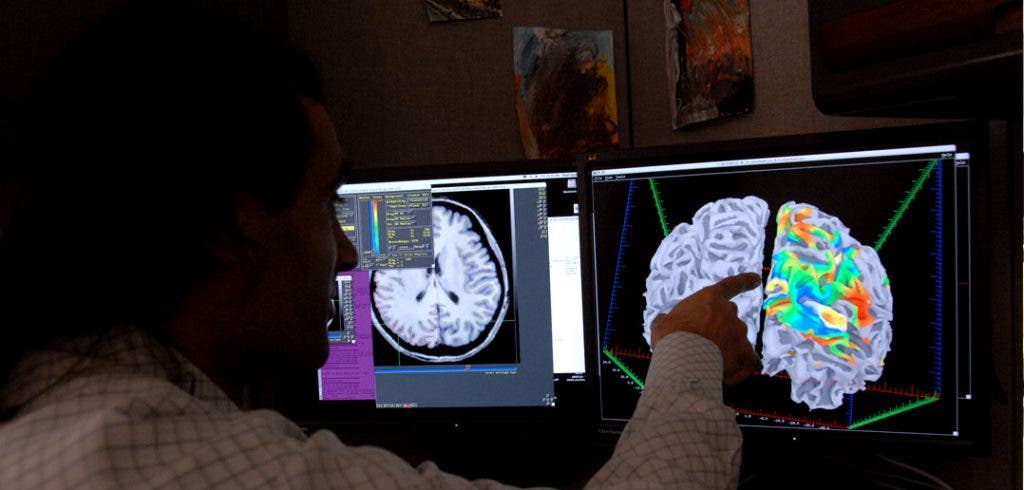Each sex’s take on navigating through the world around us, and especially the differences between them, is a subject that often surfaces during stand-up acts and day-to-day humour; “Women can’t drive,” or “men never stop to ask for directions” are all things you’ve probably heard before and to an extent, believe. There’s a kernel of truth here; it’s been well established experimentally that men in general handle specific spacial tasks better than the fairer sex.
But what generates these different takes on the same problem? It’s not the brain — we know that for all intents and purposes, brains can’t be distinguished by sex (but they do form connections differently). Cultural conditioning, upbringing and other factors certainly play a part in this, and that can’t be quantified. But Norwegian University of Science and Technology (NTNU) team was interested in the effect of something we can quantify — sexual hormones.
The researchers created two teams of 18 members, divided by sex, and asked them to orient themselves through a very large virtual maze using 3D goggles and a joystick, while the researchers looked at their neural activity.

Image via psypost
Who wants to be a Maze runner?
After familiarizing themselves with the maze for an hour, the subjects were strapped to a fMRI scanner and their brain activity was recorded while the tests progressed. They were given 45 navigational tasks (such as “find the yellow car” from different starting points) and 30 seconds to solve each one of them in.
“Men’s sense of direction was more effective. They quite simply got to their destination faster,” says Carl Pintzka, a medical doctor and PhD candidate at NTNU’s Department of Neuroscience.
The men solved 50 per cent more of the tasks than the women. The recordings show that men took several shortcuts, relied on cardinal directions to a greater degree and, more importantly for Pintzka, used a different part of the brain to orient themselves than the women in the study. And this is the reason why the guys were able to solve more of the tasks; using cardinal directions allows for a much greater flexibility while navigating, and lends itself better to reaching a known point from an unknown position as long as you know where you have to go.
“If they’re going to the Student Society building in Trondheim, for example, men usually go in the general direction where it’s located. Women usually orient themselves along a route to get there, for example, ‘go past the hairdresser and then up the street and turn right after the store’,” he says.
1-0 for the dudes, time for round two
The fMRI scans showed that navigating through space is a complex process — large areas of the brain are involved in orienting ourselves, but there are some key differences. In men, the team saw more activity in the hippocampus, whereas women tended to show more activation in the frontal areas of the brain.
“That’s in sync with the fact that the hippocampus is necessary to make use of cardinal directions,” says Pintzka.
And, from an evolutionary point of view, these results make perfect sense. While our brains are structurally the same, gender roles in those primitive human communities meant that they had to be good at different tasks.
“In ancient times, men were hunters and women were gatherers. Therefore, our brains probably evolved differently. For instance, other researchers have documented that women are better at finding objects locally than men,” Pintzka says.
In simple terms, women are faster at finding things in the house, and men are faster at finding the house.”
A little testosterone under the tongue
The next step was to try and see if the women’s brains could be made to navigate similarly to that of the men.
This time, 42 women were divided into two groups, receiving either a drop of testosterone or placebo under the tongue. To increase accuracy, the team used a double-blinded test so that neither Pintzka nor the subjects knew who got what.
“We hoped that they would be able to solve more tasks, but they didn’t. But they had improved knowledge of the layout of the maze, and they used the hippocampus to a greater extent, which tends to be used more by men for navigating,” says Pintzka.
Pintzka’s research could offer doctors insight into Alzheimer’s disease. As two in three patients are female and loss of direction is one of the first symptoms.
“Almost all brain-related diseases are different in men and women, either in the number of affected individuals or in severity. Therefore, something is likely protecting or harming people of one sex. Since we know that twice as many women as men are diagnosed with Alzheimer’s disease, there might be something related to sex hormones that is harmful,” says Pintzka.
He hopes that by understanding how men and women use different brain areas and strategies to navigate, researchers will be able to enhance the understanding of the disease’s development, and develop coping strategies for those already affected.
The paper can be found online here.






